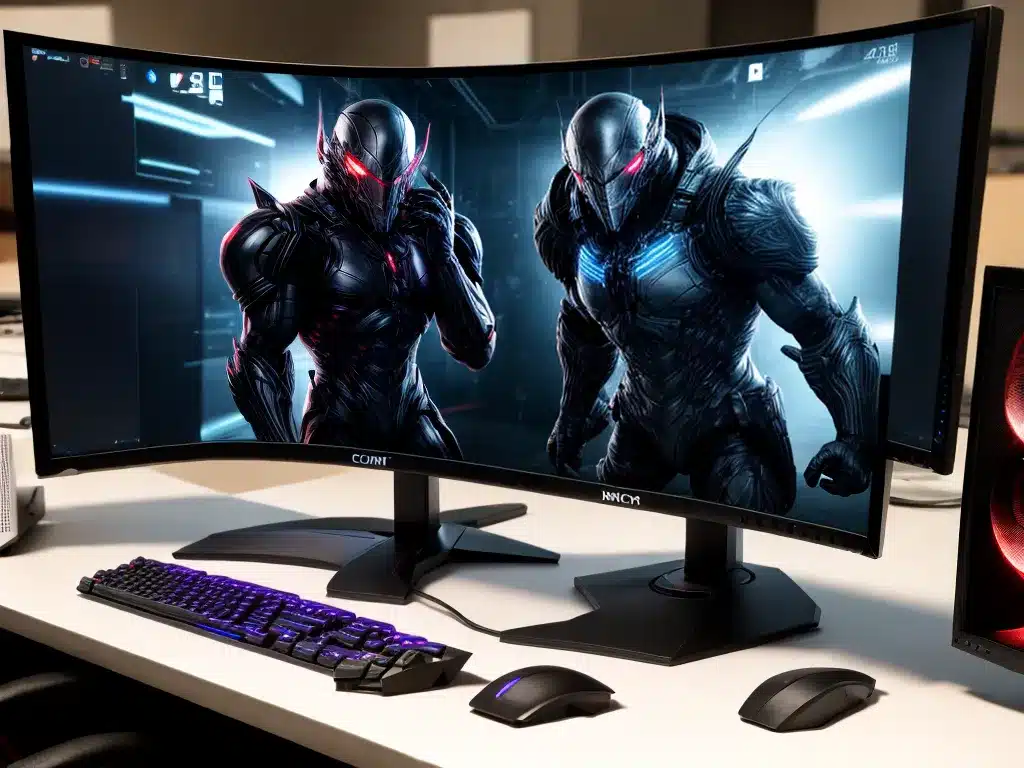

Choosing the Right Monitor for Work or Gaming
Introduction
When it comes to choosing a monitor, there are several key factors to consider based on how you plan to use it. As a gamer and office worker, I need a monitor that can cover both use cases well. In this guide, I will discuss the most important specs and features to look for when choosing the ideal monitor for work and gaming.
Panel Type
The panel type greatly impacts image quality and performance. Here are the main options:
TN Panels
TN (twisted nematic) panels are the most affordable panel type. They offer:
- Very fast response times, which is ideal for gaming.
- Decent refresh rates, often 144Hz or higher.
- Mediocre color accuracy and viewing angles.
TN panels are best for gaming on a budget.
IPS Panels
IPS (in-plane switching) panels provide:
- Excellent color accuracy and viewing angles.
- Good response times, typically 5ms or less.
- Ideal for work, creative tasks, and casual gaming.
IPS is the best all-around panel type.
VA Panels
VA (vertical alignment) panels offer:
- Good contrast ratio for deep blacks.
- Wide viewing angles but not as good as IPS.
- Slower response times than IPS, around 5-8ms.
VA strikes a balance between work and gaming use.
Refresh Rate
The refresh rate determines how many frames per second (FPS) a monitor can display.
- 60Hz is standard and fine for office work.
- 144Hz or above is recommended for a smooth gaming experience.
- Competitive esports gamers may want 240Hz or even 360Hz for extremely fluid motion.
Higher refresh rates reduce motion blur and input lag for a more responsive feel.
Response Time
Response time measures how quickly a pixel can change from one color to another.
- 1ms or less is ideal for gaming.
- 5ms is fine for work.
- 10ms or higher can cause distracting ghosting effects.
TN panels often have the fastest response times of 1-2ms.
Resolution
Resolution determines how sharp and detailed the image quality is.
- 1920 x 1080 (Full HD) is the most popular for both work and gaming. Provides great balance.
- 2560 x 1440 (QHD) offers extra sharpness for work. Demanding for gaming.
- 3840 x 2160 (4K UHD) is best suited for work. Only for gaming with high-end cards.
Higher resolutions require more graphics processing power.
Aspect Ratio
The aspect ratio is the ratio of the monitor’s width to its height.
- 16:9 is the standard widescreen ratio, ideal for both work and gaming.
- 21:9 ultrawide format provides extra horizontal space for multitasking. May cause compatibility issues in some games.
- 16:10 offers more vertical space compared to 16:9, good for coding and documents. Not common for gaming monitors.
Consider your activities and choose the aspect ratio accordingly.
Adaptive Sync
Adaptive sync technologies like AMD FreeSync and Nvidia G-Sync match the monitor’s refresh rate with the game’s frame rate for smooth, tear-free gaming.
- FreeSync works only with AMD graphics cards.
- G-Sync requires an Nvidia graphics card.
- Both require DisplayPort and add to the monitor cost.
Having adaptive sync greatly improves gaming visuals and responsiveness.
Ports
The monitor ports must match your computer’s outputs. These are the main ports available:
- HDMI – Supports high resolutions and refresh rates. Used both for work and gaming PCs.
- DisplayPort – Needed for G-Sync and FreeSync. Also supports high bandwidth signals.
- DVI – Older standard used by many gaming PCs.
- VGA – Legacy port for older work PCs.
Ideally choose a monitor with HDMI, DisplayPort, and DVI to maximize compatibility.
Size
Monitor sizes range from around 21″ to 50″ diagonally.
- 24″ to 27″ is the sweet spot for work and gaming. Provides sufficient screen space without being overwhelming.
- 32″ and above is preferred if using 4K resolution.
- Larger sizes like 40″+ are only recommended for gaming, not productivity work.
The ideal size comes down to your available desk space, viewing distance, and activities.
Features
Some additional features that are nice to have:
- Fully adjustable stand – Allows ergonomic positioning and rotation to portrait orientation.
- VESA mounting – Lets you mount the monitor on an arm or wall mount.
- Blue light filter – Reduces eye strain by limiting blue light exposure. Helpful for long work days.
- USB hub – Provides easy access to extra USB ports.
Prioritize features that will improve your experience based on planned usage.
Budget
Monitor pricing can range from $100 to $2000+ depending on the specs. Here are some general price tiers to consider:
- $100-200 – Basic 1080p monitors for work.
- $200-400 – Good IPS or VA panels with high refresh rates for work and gaming.
- $400-800 – High-end 1440p or 4K gaming monitors with G-Sync/FreeSync.
- $800+ – Cutting edge panels aimed at enthusiasts and esports pros.
I recommend spending $300-500 for a great balance of quality and value.
Conclusion
The ideal monitor for work and gaming depends a lot on your specific needs and budget. I would prioritize a 24-27″ IPS panel with a high refresh rate, low response time, and adaptive sync if your system supports it. Make sure to get the required ports and consider adjustable features. With the right monitor choice, you can have a great experience whether working or gaming.












